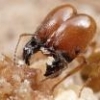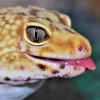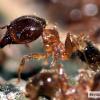I spent the spring and summer of 2008 in DC and it was an anting paradise compared to most of the western states I've lived in. Whereas in these much drier climates where you can only really collect adult colonies in mid spring, when I was in DC I had absolutely no trouble finding colonies of various species from various genus during the entirety of my stay. The ant diversity in the undeveloped stretches of bush land and forest in between suburbs was spectacular.
Go find an oak tree and start cracking open acorns and you will find quite a few Temnothorax colonies as well as a few queens from other genus that have taken up residence in them. I found several species of queens in acorns but the queen I remember being most surprised to find was a large Cremotogaster queen that you wouldn't ordinarily think would choose to cram herself into one. Also worthwhile is to lift up fallen logs and their bark as there are quite a few interesting things to be found under them. When lifting the logs and especially the bark be sure to do it as non-destructively as possible (I remember the bark usually coming off in one unbroken sheet) so that when you are done looking you can similarly lightly place them back to where they belong to avoid unnecessary habitat destruction.
Rocks are of course always good to lift if you can find them (though I never did see many good rocks while I was there). The same best practices that apply to being gentle while lifting logs applies to rocks as well as it is very easy to damage the livability of the space under a rock for many years and unlike logs those rocks are not being replaced at an appreciable rate.
If you want to find queens and don't like ticks then I suggest you spend the early morning hours and the hours during sunset walking around in your neighborhood. I had great luck finding queens from various genus doing this.
Edited by Reacker, July 21 2017 - 1:51 PM.




















